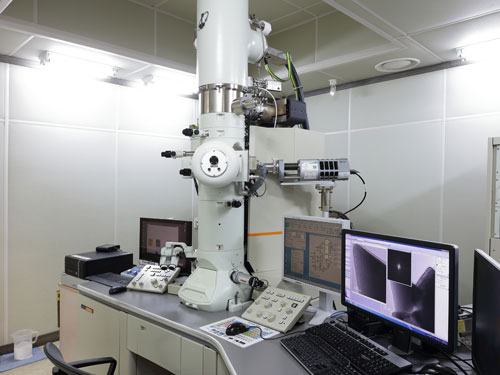- About
- Academics
-
Undergraduate Programs
- Civil and Environmental Engineering
- Architecture and Architectural Engineering
- Mechanical Engineering
- Industrial Engineering
- Energy Resources Engineering
- Nuclear Engineering
- Materials Science and Engineering
- Electrical and Computer Engineering
- Naval Architecture and Ocean Engineering
- Computer Science and Engineering
- Aerospace Engineering
- Chemical and Biological Engineering
-
Graduate Programs
- Civil and Environmental Engineering
- Architecture and Architectural Engineering
- Mechanical Engineering
- Industrial Engineering
- Energy Systems Engineering
- Materials Science and Engineering
- Electrical and Computer Engineering
- Naval Architecture and Ocean Engineering
- Computer Science and Engineering
- Chemical and Biological Engineering
- Aerospace Engineering
- Interdisciplinary Program in Technology, Management, Economics and Policy
- Interdisciplinary Program in Urban Design
- Interdisciplinary Program in Bioengineering
- Interdisciplinary Program in Artificial Intelligence
- Interdisciplinary Program in Intelligent Space and Aerospace Systems
- Chemical Convergence for Energy and Environment Major
- Multiscale Mechanics Design Major
- Hybrid Materials Major
- Double Major Program
- Open Programs
-
Undergraduate Programs
- Research
- Campus Life
- Communication
- Prospective Students
- International Office
- HOME
- Academics
- Undergraduate Programs
- Materials Science and Engineering
- Civil and Environmental Engineering
- Architecture and Architectural Engineering
- Mechanical Engineering
- Industrial Engineering
- Energy Resources Engineering
- Nuclear Engineering
- Materials Science and Engineering
- Electrical and Computer Engineering
- Naval Architecture and Ocean Engineering
- Computer Science and Engineering
- Aerospace Engineering
- Chemical and Biological Engineering
Materials Science and Engineering
 ChairMyoung Gyu Lee
ChairMyoung Gyu Lee Tel02-880-7101
Tel02-880-7101

Introduction
With the progress of high-tech industry, the modern society is changing rapidly. Taking into account the blazing speed of evolution for the past few decades, the upcoming 21st century may be a new generation, at which SF novelists' dreams come true. The basis of this high-tech industry is the Materials Science and Engineering. In many cases, the overall performance of a product is limited by the properties of the materials that make up the product.
For example, human beings have dreamed of cultivating the space long before. To build a space shuttle that transports people and goods is essential for this. We are no wonder that the space shuttles carry out their mission quite successfully for now. But the reason the space shuttle project had been delayed was the absence of insulating materials to shield the body from heat during entrance to the atmosphere. Moreover, history categorizes ancient cultures into Stone Age, Bronze Age and Steel Age. This kind of division is reasonable since the degree of civilization can be estimated by the tools which contemporary people used, or more precisely, the material with which the tools were made. Some people call the present age New Stone Age, others New Steel Age, Silicon Age, Plastic Age and so on. But what is important is that before or since, all civilizations have been categorized by the material they used. To be calmly speak, the civilizations which had not succeeded in inventing or discovering new materials was naturally wiped out from the surface of earth. And the relationships between nations can be viewed in a similar manner. A nation without predominant material research, it could not escape being subordinated to forefront nations.
As stated above, Materials Science and Engineering holds an important position in development of a nation's industry so that it indicates the competitive power of the nation. Mechanical engineering such as automotive industry and shipbuilding industry, which have contributed the most in hauling our country to one of the forefronts, has its base on the iron and steel industry. Advancement of Urban engineering, construction works, civil engineering has their base on cement industry. Semiconductor industry which is a most important portion of telecommunications has its base on numerous efforts of material scientists to enhance processes. Whatever upcoming field will be, Materials Science and Engineering will always play a major role.
The materials that are researched in
the Materials Science and Engineering are classified into polymeric, metallurgical, inorganic, biological and electrical materials.
Not only macroscopic but also microscopic understanding on materials is necessary to maximize the performance of a product. Macroscopic understanding on materials is to understand the system that the material is used in. So to speak, we have to understand the properties of materials, which is important when the materials are used as the parts of entire system. For example, we must know what the car is to understand the reason why the properties - strength, toughness, plasticity... - are needed. If a person who is studying semiconductor materials and processing studies only materials but how the circuit is working, he cannot communicate with other persons in other fields and he cannot develop himself
In Materials Science and Engineering, processing and microstructure are controlled to get properties wanted. Draw tetrahedron with these, it'll be "Tetrahedron of Materials Science and Engineering." At each angular point are Structure, Properties, Processing and Performance. Though we use same material, if another system requires other properties, we'll use other properties. When all properties are maximized, the system can have maximum performance. To obtain Maximum performance we've to understand the relation between properties, processing and structures. That is, we can estimate the performance with macroscopic understanding and to obtain the maximum performance we need microscopic understanding on materials.
Consequently, Materials Science and Engineering is closely connected with application and this gives interdisciplinary characteristics to Materials Science and Engineering. It is impossible to understand the microscopic properties without fundamental scientific understanding. So, students who want to major Materials Science and Engineering have to make effort on fundamental science and subjects.
Career Opportunities
Materials engineering is related to almost every area of engineering, such as the semiconductor, automotive, display, electronic, bionic, and medical areas. The wide range of applications can be a major advantage to those who study this field because it prepares them to undertake various types of work.


